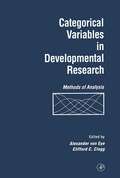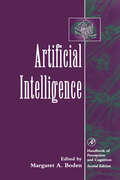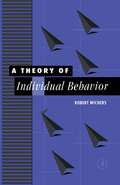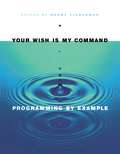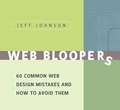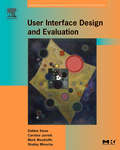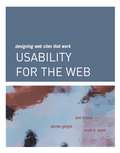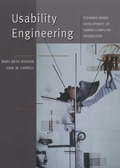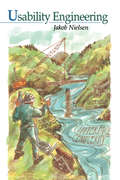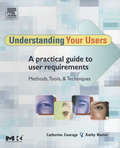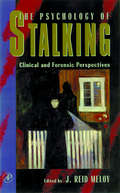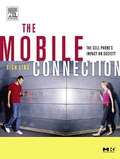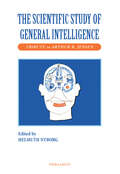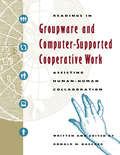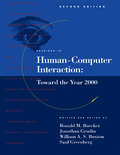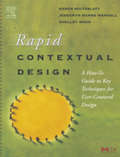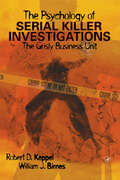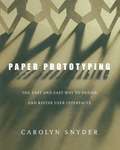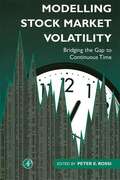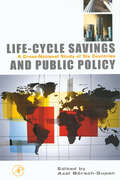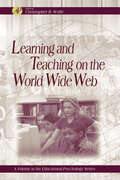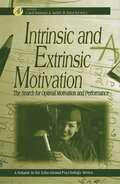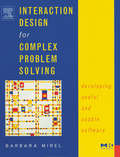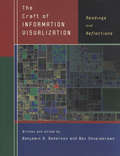- Table View
- List View
Categorical Variables in Developmental Research: Methods of Analysis
by Alexander Von Eye Clifford C. CloggCategorical Variables in Developmental Research provides developmental researchers with the basic tools for understanding how to utilize categorical variables in their data analysis. Covering the measurement of individual differences in growth rates, the measurement of stage transitions, latent class and log-linear models, chi-square, and more, the book provides a means for developmental researchers to make use of categorical data.Measurement and repeated observations of categorical data Catastrophe theoryLatent class and log-linear modelsApplications
Artificial Intelligence (Handbook Of Perception And Cognition)
by Margaret A. BodenArtificial Intelligence is the study of how to build or program computers to enable them to do what minds can do. This volume discusses the ways in which computational ideas and computer modeling can aid our understanding of human and animal minds. Major theoretical approaches are outlined, as well as some promising recent developments. Fundamental philosophical questions are discussed along with topics such as: the differences between symbolic and connectionist AI, planning and problem solving, knowledge representation, learning, expert systems, vision, natural language, creativity, and human-computer interaction. This volume is suitable for any psychologist, philosopher, or computer scientist wanting to know the current state of the art in this area of cognitive science.Up-to-date account of how computational ideas and techniques are relevant to psychologyIncludes discussions of "classical" (symbolic) AI, of connectionism (neural nets), of evolutionary programming, and of A-LifeDiscusses a wide range of psychology from low-level vision to creativity
A Theory of Individual Behavior
by Robert WichersA Theory of Individual Behavior dispels the notion that individuals act as rational agents and strives to capture idiosyncratic humanness through rigorous mathematics. Wichers describes a version of economic behavior that is more comprehensive and satisfying than neoclassical models yet still consistent with the usual aggregated concepts that form the basis of applied microeconomics. Written in an accessible and convincing style, A Theory of Individual Behavior discusses innovative material in a format that encourages classroom use. All chapters have questions at their conclusions, and there is a strong emphasis on testable results. The book contains a short review of mathematical models and discussion of received microeconomic theory, as well as summaries at the ends of chapters and many examples and illustrations.Dispels the notion that individuals act as rational agents while capturing idiosyncratic human behavior through rigorous mathematicsPresents an innovative approach to the evolution of microeconomic theoryPromotes advances in behavioral theories in the social sciences, including psychology and sociologyDelivers an accessible style with a strong emphasis on testable results
Your Wish is My Command: Programming By Example (Interactive Technologies)
by Henry LiebermanAs user interface designers, software developers, and yes-as users, we all know the frustration that comes with using "one size fits all" software from off the shelf. Repeating the same commands over and over again, putting up with an unfriendly graphical interface, being unable to program a new application that you thought of yourself-these are all common complaints. The inflexibility of today's computer interfaces makes many people feel like they are slaves to their computers. Shouldn't it be the other way around? Why can't technology give us more "custom-fitting" software?On the horizon is a new technology that promises to give ordinary users the power to create and modify their own programs. Programming by example (PBE) is a technique in which a software agent records a user's behavior in an interactive graphical interface, then automatically writes a program that will perform that behavior for the user.Your Wish is My Command: Programming by Example takes a broad look at this new technology. In these nineteen chapters, programming experts describe implemented systems showing that PBE can work in a wide variety of application fields. They include the following:The renowned authors and their editor believe that PBE will some day make it possible for interfaces to effectively say to the user, "Your wish is my command!"Text and graphical editingWeb browsingComputer-aided designTeaching programming to childrenProgramming computer gamesGeographical information systems
Web Bloopers: 60 Common Web Design Mistakes, and How to Avoid Them (Interactive Technologies)
by Jeff JohnsonThe dot.com crash of 2000 was a wake-up call, and told us that the Web has far to go before achieving the acceptance predicted for it in '95. A large part of what is missing is quality; a primary component of the missing quality is usability. The Web is not nearly as easy to use as it needs to be for the average person to rely on it for everyday information, commerce, and entertainment.In response to strong feedback from readers of GUI BLOOPERS calling for a book devoted exclusively to Web design bloopers, Jeff Johnson calls attention to the most frequently occurring and annoying design bloopers from real web sites he has worked on or researched. Not just a critique of these bloopers and their sites, this book shows how to correct or avoid the blooper and gives a detailed analysis of each design problem. Hear Jeff Johnson's interview podcast on software and website usability at the University of Canterbury (25 min.)Discusses in detail 60 of the most common and critical web design mistakes, along with the solutions, challenges, and tradeoffs associated with them. Covers important subject areas such as: content, task-support, navigation, forms, searches, writing, link appearance, and graphic design and layout. Organized and formatted based on the results of its own usability test performed by web designers themselves.Features its own web site (www.web-bloopers.com)with new and emerging web design no-no's (because new bloopers are born every day) along with a much requested printable blooper checklist for web designers and developers to use.
User Interface Design and Evaluation (Interactive Technologies)
by Debbie Stone Caroline Jarrett Mark Woodroffe Shailey MinochaUser Interface Design and Evaluation provides an overview of the user-centered design field. It illustrates the benefits of a user-centered approach to the design of software, computer systems, and websites. The book provides clear and practical discussions of requirements gathering, developing interaction design from user requirements, and user interface evaluation. The book's coverage includes established HCI topics—for example, visibility, affordance, feedback, metaphors, mental models, and the like—combined with practical guidelines for contemporary designs and current trends, which makes for a winning combination. It provides a clear presentation of ideas, illustrations of concepts, using real-world applications. This book will help readers develop all the skills necessary for iterative user-centered design, and provides a firm foundation for user interface design and evaluation on which to build. It is ideal for seasoned professionals in user interface design and usability engineering (looking for new tools with which to expand their knowledge); new people who enter the HCI field with no prior educational experience; and software developers, web application developers, and information appliance designers who need to know more about interaction design and evaluation.Co-published by the Open University, UK.Covers the design of graphical user interfaces, web sites, and interfaces for embedded systems.Full color production, with activities, projects, hundreds of illustrations, and industrial applications.
Usability for the Web: Designing Web Sites that Work (Interactive Technologies)
by Tom Brinck Darren Gergle Scott D. WoodEvery stage in the design of a new web site is an opportunity to meet or miss deadlines and budgetary goals. Every stage is an opportunity to boost or undercut the site's usability. Usability for the Web tells you how to design usable web sites in a systematic process applicable to almost any business need. You get practical advice on managing the project and incorporating usability principles from the project's inception. This systematic usability process for web design has been developed by the authors and proven again and again in their own successful businesses. A beacon in a sea of web design titles, this book treats web site usability as a preeminent, practical, and realizable business goal, not a buzzword or abstraction. The book is written for web designers and web project managers seeking a balance between usability goals and business concerns.Examines the entire spectrum of usability issues, including architecture, navigation, graphical presentation, and page structure.Explains clearly the steps relevant to incorporating usability into every stage of the web development process, from requirements to tasks analysis, prototyping and mockups, to user testing, revision, and even postlaunch evaluations.
Usability Engineering: Scenario-Based Development of Human-Computer Interaction (Interactive Technologies)
by John M. Carroll Mary Beth RossonYou don't need to be convinced. You know that usability is key to the success of any interactive system-from commercial software to B2B Web sites to handheld devices. But you need skills to make usability part of your product development equation. How will you assess your users' needs and preferences? How will you design effective solutions that are grounded in users' current practices? How will you evaluate and refine these designs to ensure a quality product? Usability Engineering: Scenario-Based Development of Human-Computer Interaction is a radical departure from traditional books that emphasize theory and address experts. This book focuses on the realities of product development, showing how user interaction scenarios can make usability practices an integral part of interactive system development. As you'll learn, usability engineering is not the application of inflexible rules; it's a process of analysis, prototyping, and problem solving in which you evaluate tradeoffs, make reasoned decisions, and maximize the overall value of your product.Written by prominent HCI educators who understand how to teach usability practices to students and professional developers.Interleaves HCI theory and concepts with a running case study demonstrating their application. Gradually elaborates the case study to introduce increasingly sophisticated usability engineering techniques.Analyzes usability issues in realistic scenarios that describe existing or envisioned systems from the perspective of one or more users.Emphasizes the real world of usability engineering-a world in which tradeoffs must be weighed and difficult decisions made to achieve desired results.
Usability Engineering (Interactive Technologies)
by Jakob NielsenWritten by the author of the best-selling HyperText & HyperMedia, this book is an excellent guide to the methods of usability engineering. The book provides the tools needed to avoid usability surprises and improve product quality. Step-by-step information on which method to use at various stages during the development lifecycle are included, along with detailed information on how to run a usability test and the unique issues relating to international usability.* Emphasizes cost-effective methods that developers can implement immediately* Instructs readers about which methods to use when, throughout the development lifecycle, which ultimately helps in cost-benefit analysis. * Shows readers how to avoid the four most frequently listed reasons for delay in software projects.* Includes detailed information on how to run a usability test.* Covers unique issues of international usability.* Features an extensive bibliography allowing readers to find additional information.* Written by an internationally renowned expert in the field and the author of the best-selling HyperText & HyperMedia.
Understanding Your Users: A Practical Guide to User Requirements Methods, Tools, and Techniques (Interactive Technologies)
by Kathy Baxter Catherine CourageToday many companies are employing a user-centered design (UCD) process, but for most companies, usability begins and ends with the usability test. Although usability testing is a critical part of an effective user-centered life cycle, it is only one component of the UCD process. This book is focused on the requirements gathering stage, which often receives less attention than usability testing, but is equally as important. Understanding user requirements is critical to the development of a successful product. Understanding Your Users is an easy to read, easy to implement, how-to guide on usability in the real world. It focuses on the "user requirements gathering" stage of product development and it provides a variety of techniques, many of which may be new to usability professionals. For each technique, readers will learn how to prepare for and conduct the activity, as well as analyze and present the data —all in a practical and hands-on way. In addition, each method presented provides different information about the user and their requirements (e.g., functional requirements, information architecture, task flows). The techniques can be used together to form a complete picture of the users’ requirements or they can be used separately to address specific product questions. These techniques have helped product teams understand the value of user requirements gathering by providing insight into how users work and what they need to be successful at their tasks. Case studies from industry-leading companies demonstrate each method in action. In addition, readers are provided with the foundation to conduct any usability activity (e.g., getting buy-in from management, legal and ethical considerations, setting up your facilities, recruiting, moderating activities) and to ensure the incorporation of the results into their products.·Covers all of the significant requirements gathering methods in a readable, practical way·Presents the foundation readers need to prepare for any requirements gathering activity and ensure that the results are incorporated into their products ·Includes invaluable worksheet and template appendices·Includes a case study for each method from industry leaders·Written by experienced authors who teach conference courses on this subject to usability professionals and new product designers alike
The Psychology of Stalking: Clinical and Forensic Perspectives
by J. Reid MeloyThe Psychology of Stalking is the first scholarly book on stalking ever published. Virtually every serious writer and researcher in this area of criminal psychopathology has contributed a chapter. These chapters explore stalking from social, psychiatric, psychological and behavioral perspectives. New thinking and data are presented on threats, pursuit characteristics, psychiatric diagnoses, offender-victim typologies, cyberstalking, false victimization syndrome, erotomania, stalking and domestic violence, the stalking of public figures, and many other aspects of stalking, as well as legal issues. This landmark text is of interest to both professionals and other thoughtful individuals who recognize the serious nature of this ominous social behavior.First scholarly book on stalking ever publishedContributions from virtually all major researchers in fieldDiscussion of what to do when being stalkedUses examples from recent publicized cases
The Psychology of Stalking: Clinical and Forensic Perspectives
by J. Reid MeloyThe Psychology of Stalking is the first scholarly book on stalking ever published. Virtually every serious writer and researcher in this area of criminal psychopathology has contributed a chapter. These chapters explore stalking from social, psychiatric, psychological and behavioral perspectives. New thinking and data are presented on threats, pursuit characteristics, psychiatric diagnoses, offender-victim typologies, cyberstalking, false victimization syndrome, erotomania, stalking and domestic violence, the stalking of public figures, and many other aspects of stalking, as well as legal issues. This landmark text is of interest to both professionals and other thoughtful individuals who recognize the serious nature of this ominous social behavior.First scholarly book on stalking ever publishedContributions from virtually all major researchers in fieldDiscussion of what to do when being stalkedUses examples from recent publicized cases
The Mobile Connection: The Cell Phone's Impact on Society (Interactive Technologies)
by Rich LingHas the cell phone forever changed the way people communicate? The mobile phone is used for “real time" coordination while on the run, adolescents use it to manage their freedom, and teens “text" to each other day and night. The mobile phone is more than a simple technical innovation or social fad, more than just an intrusion on polite society. This book, based on world-wide research involving tens of thousands of interviews and contextual observations, looks into the impact of the phone on our daily lives. The mobile phone has fundamentally affected our accessibility, safety and security, coordination of social and business activities, and use of public places. Based on research conducted in dozens of countries, this insightful and entertaining book examines the once unexpected interaction between humans and cell phones, and between humans, period. The compelling discussion and projections about the future of the telephone should give designers everywhere a more informed practice and process, and provide researchers with new ideas to last years.*Rich Ling (an American working in Norway) is a prominent researcher, interviewed in the new technology article in the November 9 issue of the New York Times Magazine. *A particularly "good read", this book will be important to the designers, information designers, social psychologists, and others who will have an impact on the development of the new third generation of mobile telephones. *Carefully and wittily written by a senior research scientist at Telenor, Norway's largest telecommunications company, and developer of the first mobile telephone system that allowed for international roaming.
The Scientific Study of General Intelligence: Tribute to Arthur Jensen
by Helmuth NyborgThis book celebrates two triumphs in modern psychology: the successful development and application of a solid measure of general intelligence; and the personal courage and skills of the man who made this possible - Arthur R. Jensen from Berkeley University. The volume traces the history of intelligence from the early 19th century approaches, to the most recent analyses of the hierarchical structure of cognitive abilities, and documents the transition from a hopelessly confused concept of intelligence to the development of an objective measure of psychometric g. The contributions illustrate the impressive power g has with respect to predicting educational achievement, getting an attractive job, or social stratification. The book is divided into six parts as follows: Part I presents the most recent higher-stream analysis of cognitive abilities, Part II deals with biological aspects of g, such as research on brain imaging, glucose uptake, working memory, reaction time, inspection time, and other biological correlates, and concludes with the latest findings in g-related molecular genetics. Part III addresses demographic aspects of g, such as geographic-, race-, and sex-differences, and introduces differential psychological aspects as well. Part IV concentrates on the g nexus, and relates such highly diverse topics as sociology, genius, retardation, training, education, jobs, and crime to g. Part V contains chapters critical of research on g and its genetic relationship, and also presents a rejoinder. Part VI looks at one of the greatest contemporary psychologists, Professor Emeritus Arthur R. Jensen as teacher and mentor.
Readings in Groupware and Computer-Supported Cooperative Work: Assisting Human-Human Collaboration (Interactive Technologies)
by Ronald M. BaeckerThis comprehensive introduction to the field represents the best of the published literature on groupware and computer-supported cooperative work (CSCW). The papers were chosen for their breadth of coverage of the field, their clarity of expression and presentation, their excellence in terms of technical innovation or behavioral insight, their historical significance, and their utility as sources for further reading. Taken as a whole, the papers and their introductions are a complete sourcebook to the field. This book will be useful for computer professionals involved in the development or purchase of groupware technology as well as for researchers and managers. It should also serve as a valuable text for university courses on CSCW, groupware, and human-computer interaction.
Readings in Human-Computer Interaction: Toward the Year 2000 (Interactive Technologies)
by Ronald M. BaeckerThe effectiveness of the user-computer interface has become increasingly important as computer systems have become useful tools for persons not trained in computer science. In fact, the interface is often the most important factor in the success or failure of any computer system. Dealing with the numerous subtly interrelated issues and technical, behavioral, and aesthetic considerations consumes a large and increasing share of development time and a corresponding percentage of the total code for any given application. A revision of one of the most successful books on human-computer interaction, this compilation gives students, researchers, and practitioners an overview of the significant concepts and results in the field and a comprehensive guide to the research literature. Like the first edition, this book combines reprints of key research papers and case studies with synthesizing survey material and analysis by the editors. It is significantly reorganized, updated, and enhanced; over 90% of the papers are new. An invaluable resource for systems designers, cognitive scientists, computer scientists, managers, and anyone concerned with the effectiveness of user-computer interfaces, it is also designed for use as a primary or supplementary text for graduate and advanced undergraduate courses in human-computer interaction and interface design.Human computer interaction--historical, intellectual, and socialDeveloping interactive systems, including design, evaluation methods, and development toolsThe interaction experience, through a variety of sensory modalities including vision, touch, gesture, audition, speech, and languageTheories of information processing and issues of human-computer fit and adaptation
Rapid Contextual Design: A How-to Guide to Key Techniques for User-Centered Design (Interactive Technologies)
by Shelley Wood Karen Holtzblatt Jessamyn Burns WendellIs it impossible to schedule enough time to include users in your design process? Is it difficult to incorporate elaborate user-centered design techniques into your own standard design practices? Do the resources needed seem overwhelming? This handbook introduces Rapid CD, a fast-paced, adaptive form of Contextual Design. Rapid CD is a hands-on guide for anyone who needs practical guidance on how to use the Contextual Design process and adapt it to tactical projects with tight timelines and resources. Rapid Contextual Design provides detailed suggestions on structuring the project and customer interviews, conducting interviews, and running interpretation sessions. The handbook walks you step-by-step through organizing the data so you can see your key issues, along with visioning new solutions, storyboarding to work out the details, and paper prototype interviewing to iterate the design—all with as little as a two-person team with only a few weeks to spare!Includes real project examples with actual customer data that illustrate how a CD project actually worksCovers the entire scope of a project, from deciding on the number and type of interviews, to interview set up and analyzing collected data. Sample project schedules are also included for a variety of different types of projectsProvides examples of how-to write affinity notes and affinity labels, build an affinity diagram, and step-by-step instructions for consolidating sequence modelsShows how to use consolidated data to define a design within tight time frames with examples of visions, storyboards, and paper prototypesIntroduces CDTools™, the first application designed to support customer-centered design
The Psychology of Serial Killer Investigations: The Grisly Business Unit
by William J. Birnes Robert D. KeppelSerial killers like Seattle's Ted Bundy, Maryland's Beltway Sniper, Atlanta's Wayne Williams, or England's Peter Sutcliffe usually outsmart the task forces on their trail for long periods of time. Keppel and Birnes take readers inside the operations of serial killer task forces to learn why. What is the underlying psychology of a serial killer and why this defeats task force investigations? This is the first book of its kind that combines state-of-the-art psychological assessment experience with the expertise of a homicide investigator who has tracked some of this country's most notorious serial killers. The author also brings to the book hands-on best practices gleaned from the experience of other task forces. Readers, both professionals and students, will benefit from the comprehensive and critical case reviews, the analysis of what went wrong, what went right, and the after-action recommendations of evaluators in the US, UK, and Canada. The book covers: * The nature of the psychology of a serial killer * How crime assessment profiling reveals that psychology * Why psychological profiles fail * How serial killer task forces defeat themselves * How the media can, and usually does, undermine the task force operation * The big secret of all serial killer investigations: police already have the killer's name * The best practices for catching a serial killer* Comprehensive case reviews of some of the US's and UK's most baffling serial killer cases * A list of best practices for serial killer task force investigators * Recommendations for how to manage comprehensive files and computer records* Practical advice on how to manage the media: what to say and not to say* Insight into what a serial killer might be thinking and doing to stay away from police* Recommendations for setting up and administering long-term investigations* Practical tips on how to maintain a task force's psychological edge and avoid defeatism
Paper Prototyping: The Fast and Easy Way to Design and Refine User Interfaces (Interactive Technologies)
by Carolyn SnyderDo you spend a lot of time during the design process wondering what users really need? Do you hate those endless meetings where you argue how the interface should work? Have you ever developed something that later had to be completely redesigned? Paper Prototyping can help. Written by a usability engineer with a long and successful paper prototyping history, this book is a practical, how-to guide that will prepare you to create and test paper prototypes of all kinds of user interfaces. You'll see how to simulate various kinds of interface elements and interactions. You'll learn about the practical aspects of paper prototyping, such as deciding when the technique is appropriate, scheduling the activities, and handling the skepticism of others in your organization. Numerous case studies and images throughout the book show you real world examples of paper prototyping at work. Learn how to use this powerful technique to develop products that are more useful, intuitive, efficient, and pleasing: * Save time and money - solve key problems before implementation begins * Get user feedback early - use it to focus the development process * Communicate better - involve development team members from a variety of disciplines * Be more creative - experiment with many ideas before committing to one*Enables designers to solve design problems before implementation begins *Five case studies provide real world examples of paper prototyping at work *Delves into the specifics of what types of projects paper prototyping is and isn't good for.
Modelling Stock Market Volatility: Bridging the Gap to Continuous Time
by Peter E. RossiThis essay collection focuses on the relationship between continuous time models and Autoregressive Conditionally Heteroskedastic (ARCH) models and applications. For the first time, Modelling Stock Market Volatility provides new insights about the links between these two models and new work on practical estimation methods for continuous time models. Featuring the pioneering scholarship of Daniel Nelson, the text presents research about the discrete time model, continuous time limits and optimal filtering of ARCH models, and the specification and estimation of continuous time processes. This work will lead to a rapid growth in their empirical application as they are increasingly subjected to routine specification testing. Provides for the first time new insights on the links between continuous time and ARCH models Collects seminal scholarship by some of the most renowned researchers in finance and econometrics Captures complex arguments underlying the approximation and proper statistical modelling of continuous time volatility dynamics
Life-Cycle Savings and Public Policy: A Cross-National Study of Six Countries
by Axel Borsch-SupanLife-Cycle Savings and Public Policy examines data on many households from a number of different countries. The hope is that through these observations we can learn about the ways policies affect savings, and that other differences among savers can be controlled for, instead of being blamed on cultural differences. This book features a consistent framework among chapters. It reaches a harmony between measurement and analysis to compare accurately the resulting data and statistics. It provides econometric methodology to reveal the way policies affect savings. The book features data on household savings in Germany, Italy, Japan, the Netherlands, the U.K., and the U.S. This book is recommended reading for anyone interested in saving, social insurance policy, or capital formation. Features a consistent framework among chaptersReaches a harmony between measurement and analysis to compare accurately the resulting data and statisticsProvides econometric methodology to reveal the way policies affect savings
Learning and Teaching on the World Wide Web (ISSN #Volume -)
by Christopher R. WolfeThis book is about using the Internet as a teaching tool. It starts with the psychology of the learner and looks at how best to fit technology to the student, rather than the other way around. The authors include leading authorities in many areas of psychology, and the book takes a broad look at learners as people. Thus, it includes a wide range of materials from how the eye "reads" moving graphs on a Web page to how people who have never met face-to-face can interact on the Internet and create "communities" of learners. The book considers many Internet technologies, but focuses on the World Wide Web and new "hybrid" technologies that integrate the Web with other communications technologies. This book is essential to researchers is psychology and education who are interested in learning. It is also used in college and graduate courses in departments of psychology and educational psychology. Teachers and trainers at any level who are using technology in their teaching (or thinking about it) find this book very useful.Key Features* Distinguished authors with considerable expertise in their fields* Broad "intra-disciplinary" perspective on learning and teaching on the Web* Focus on the Web and emerging Web-based technologies* Special attention to conducting educational research on-line* Emphasis on the Social and Psychological Context* Analyses of effective Web-based learning resources* Firmly grounded in contemporary psychological research and theory
Intrinsic and Extrinsic Motivation: The Search for Optimal Motivation and Performance (ISSN)
by Judith M. Harackiewicz Carol SansoneIn understanding human behavior, psychologists have long been interested in what motivates specific actions. Debates have pitted extrinsic motivators (e.g. rewards/punishment) against intrinsic motivation in attempting to determine what best motivates individuals. This book provides a summary view of what research has determined about both extrinsic and intrinsic motivation, and clarifies what questions remain unanswered. Divided into three sections, section I revisits the debate about the effects of extrinsic incentives or constraints on intrinsic motivation and creativity, and identifies theoretical advances in motivational research. Section II focuses on the hidden costs and benefits of different types of achievement goals on motivation and performance. Section III discusses theory and research findings on how extrinsic and intrinsic motivators may work in everyday life and over time. This book is of interest to researchers in psychology, education, and business, as well as to a wider audience interested in promoting optimal motivation and performance.Coverage in this book includes:* Debates and controversies in motivational research* Developmental nature of intrinsic and extrinsic motivation over time* Influences of parents, educators, and employers in facilitating motivation* Effect of achievement goals on learning and performance* The role of intrinsic and extrinsic motivation in self-regulationKey Features* Brings together major figures in the fields of motivation, education, and social psychology* Provides a mix of theory, basic and applied research* Presents research conducted both in laboratories and educational settings* Comprehensive chapters provide excellent reviews of previous literature as well as outlines important new directions* Provides different perspectives on controversial debates in a balanced, constructive manner
Interaction Design for Complex Problem Solving: Developing Useful and Usable Software (Interactive Technologies)
by Barbara MirelSoftware for complex problem solving can dazzle people with advanced features and alluring visuals, but when actually put to use it often disappoints and even frustrates users. This software rarely follows the user's own work methods, nor does it give people the degree of control and choice that they truly need.This book presents a groundbreaking approach to interaction design for complex problem solving applications. The author uses her vast field experience to present a new way of looking at the whole process, and treats complex problem solving software and web applications as a distinct class with its own set of usefulness demands and design criteria. This approach highlights integrated interactions rather than discrete actions, clearly defines what makes problem solving complex, and explores strategies for analyzing, modeling, and designing for exploratory inquiries.·In depth case studies ranging from IT troubleshooting to marketing analysis to risk assessments in healthcare show exactly where and what goes wrong in real world activities and how to improve them.·Presents a system and framework for analyzing complex work and takes the mystery out of eliciting patterns of work and their meanings.·Offers new perspectives for support and new design strategies for building the right models into programs so that they effectively address users' dynamic work. ·Allows designers to turn findings into useful designs for problems that require users to create new knowledge but with no one right answer and with many methods of reaching solutions.
The Craft of Information Visualization: Readings and Reflections (Interactive Technologies)
by Ben Shneiderman Benjamin B. BedersonSince the beginning of the computer age, researchers from many disciplines have sought to facilitate people's use of computers and to provide ways for scientists to make sense of the immense quantities of data coming out of them. One gainful result of these efforts has been the field of information visualization, whose technology is increasingly applied in scientific research, digital libraries, data mining, financial data analysis, market studies, manufacturing production control, and data discovery.This book collects 38 of the key papers on information visualization from a leading and prominent research lab, the University of Maryland’s Human-Computer Interaction Lab (HCIL). Celebrating HCIL’s 20th anniversary, this book presents a coherent body of work from a respected community that has had many success stories with its research and commercial spin-offs. Each chapter contains an introduction specifically written for this volume by two leading HCI researchers, to describe the connections among those papers and reveal HCIL’s individual approach to developing innovations.*Presents key ideas, novel interfaces, and major applications of information visualization tools, embedded in inspirational prototypes.*Techniques can be widely applied in scientific research, digital libraries, data mining, financial data analysis, business market studies, manufacturing production control, drug discovery, and genomic studies.*Provides an "insider" view to the scientific process and evolution of innovation, as told by the researchers themselves.*This work comes from the prominent and high profile University of Maryland's Human Computer Interaction Lab
